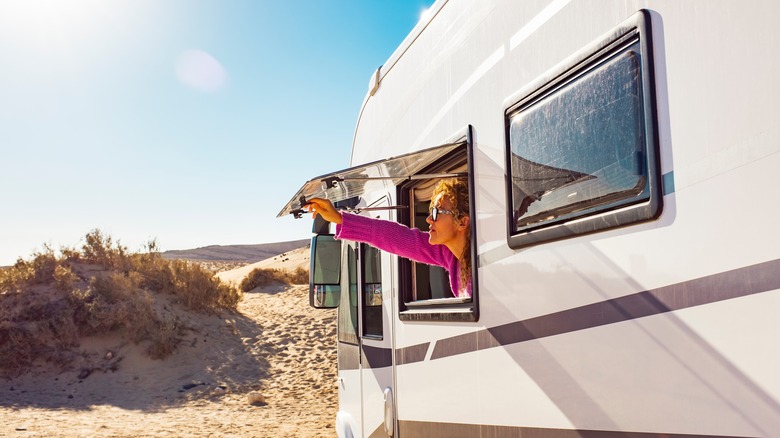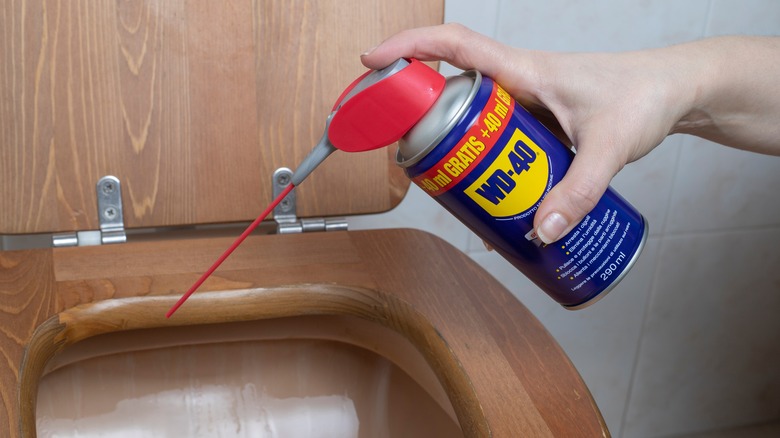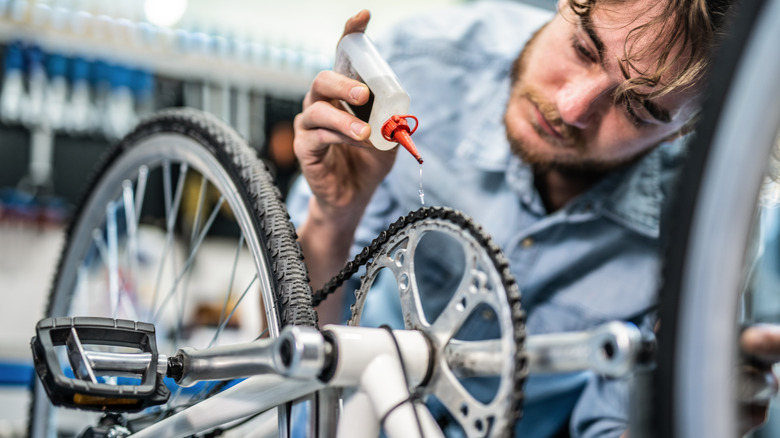Why You Should Bring WD-40 On Your Next RV Trip
You know you've hit peak adulthood when you buy your first can of WD-40. From silencing squeaky door hinges to preventing rust, what can't it fix? Maybe broken hearts ... but, then again, taking care of a long-neglected house project could be exactly what you needed to forget about your lost love.
In all seriousness, there's a reason your parents all have WD-40 lying around. Much like a toilet plunger, when you need it, you don't want to be without it. This doubly applies to when you're out and about in your RV — hitting the open road without a it is a recipe for unmitigated road trip disaster.
If you think we are being even slightly dramatic, we respectfully disagree. WD-40 is an all-purpose lubricant that can do a whole lot more than just fix squeaky hinges. It's going to be the next thing you're raving about by the campfire with all your friends. You'll be like that one guy who plays guitar and only knows Wonderwall, but cooler and probably handier, too. However, if you're not sure exactly what that little blue bottle can do, we got you. Read along to learn all the amazing and unexpected ways you can use WD-40 on your next RV road trip.
Highly unexpected uses for WD-40 that will come in handy on your RV trip
You probably already know the basics of WD-40 — it can be used on a lot of mechanical parts to keep things moving smoothly and unstick them if they're stuck, such as sliding windows, sticky locks, and slide-out drawers. With so many moving parts on an RV, you can imagine how WD-40 could come in handy.
But, did you know that WD-40 is also a great stain remover? While it might seem odd to use an oily product on a stained carpet, pair of pants, or oil spots on concrete, think back to your high school science class and you might understand how it works. If you need a hint, like dissolves like.
When it comes to stuck in stains, sometimes WD-40 will do the trick. Let's say you've already washed a pair of pants that had some oil stains from last night's taco run. Now you're trying to spot-treat it but nothing is working. Instead of throwing them out, try WD-40 as a last resort. It can loosen up those stubborn, set-in stains and wash out after some direct scrubbing with a toothbrush and some detergent. You can also use it to remove scale from your toilets and sinks, clean up automotive fluids from carpets and concrete, and even remove the evidence — er, we mean — stubborn paint stains from your RV that can happen after minor bumps and scrapes against other vehicles.
Here's when you shouldn't use WD-40
Okay, so we've said repeatedly that you can use WD-40 on hinges, but we have a small caveat to that you should be aware of. If you live in a particularly dusty area, like a desert, you may want to use this sparingly. WD-40 can definitely relieve squeaky hinges but it does attract dust which can cause more problems with your hinges than you started with. Similarly, don't use WD-40 on bike chains. These are obviously in very high contact with debris and dirt and will collect build up if WD-40 is used. Bike chains need a special lubricant to continue functioning properly.
While great for many things, WD-40 definitely should not come into contact with any electronics. While you might think this can make stuck buttons move a little more smoothly, it can actually severely damage the electronics inside and make them unusable. You should also avoid spraying WD-40 on any clear polystyrene and polycarbonate plastics. You can use it to clean up garden furniture to give it a shiny appearance but any clear plastics like eye-glasses or lighting fixtures should be avoided.


